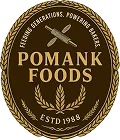In today’s competitive bakery market, many business owners focus on reducing input costs to improve profitability. However, growing evidence suggests that investing in quality ingredients can actually deliver better long-term returns. This article examines how premium ingredients like professional-grade margarine can impact your bakery’s bottom line through multiple business pathways.
The True Cost Calculation
When evaluating ingredient costs, many bakeries focus solely on the purchase price. However, a more comprehensive approach considers the total impact on your business:
- Yield Efficiency: Premium ingredients often provide better performance, requiring less product to achieve the same results. For example, high-quality margarine with 80% fat content typically requires 15-20% less product than lower-grade alternatives.
- Waste Reduction: Better performance consistency means fewer batches rejected due to quality issues. Our case studies show that bakeries using premium ingredients experience 30-40% less waste than those using economy options.
- Labor Efficiency: Quality ingredients generally process more predictably, reducing the time and skill required to achieve consistent results. This translates to labor savings of approximately 10-15% in most applications.
- Extended Shelf Life: Products made with quality ingredients typically maintain freshness longer. Extended shelf life means less unsold product and greater sales opportunities, typically resulting in 20-25% less product waste.
The Customer Perception Factor
Beyond direct cost considerations, ingredient quality significantly impacts how customers perceive your products:
- Repeat Purchase Rates: Data from bakeries across Ghana shows that improving ingredient quality leads to 15-30% higher customer return rates within the first three months.
- Price Elasticity: Consumers are increasingly willing to pay premium prices for perceived quality. Bakeries using professional-grade ingredients report being able to command 20-35% higher prices for comparable products.
- Word-of-Mouth Marketing: Product quality remains the number one factor influencing customer recommendations. Bakeries focusing on ingredient quality report 40% higher referral rates than those prioritizing cost reduction.
Case Study: Tale of Two Bakeries
Consider two actual bakeries in Kumasi (names changed for privacy):
Bakery A: Cost-Focus Strategy
- Uses economy ingredients to maximize margin per unit
- Initial ingredient savings: 25%
- However:
- 18% of production rejected due to inconsistency
- 35% lower customer return rate
- Products must be sold at competitive discount
- Monthly profit margin: 22%
Bakery B: Quality-Focus Strategy
- Uses premium ingredients including professional-grade margarine
- Higher initial ingredient cost: 25% more than Bakery A
- However:
- Only 3% production rejection rate
- 70% customer return rate
- Commands 30% price premium in market
- Monthly profit margin: 38%
Despite higher input costs, Bakery B achieves significantly better overall profitability through improved efficiency, reduced waste, higher pricing power, and stronger customer loyalty.
Implementing a Quality-First Approach
For bakeries looking to transition to a quality-focused strategy, consider these steps:
- Gradual Implementation: Start by upgrading key ingredients in your signature products before expanding to your full range.
- Supplier Partnerships: Work with ingredient suppliers who provide technical support along with quality products. The right partner will help you optimize recipes and processes.
- Staff Training: Ensure your team understands how to properly use premium ingredients to maximize their benefits. Proper handling and application are essential.
- Customer Education: Communicate your quality focus to customers through product information, staff knowledge, and marketing materials. Help them understand the value difference.
- Performance Tracking: Implement systems to measure the business impact of ingredient quality, including production efficiency, waste reduction, and customer retention.
The evidence is clear: for most bakeries, the path to improved profitability lies not in cutting ingredient costs but in strategic investment in quality inputs that drive overall business performance. When calculated properly, premium ingredients often represent not an expense but an investment with substantial returns.


